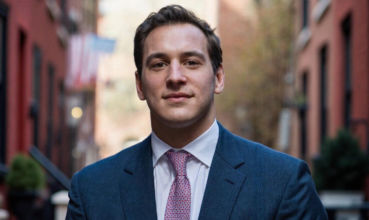When the Manoucheri brothers decided to expand their family’s real estate empire from California to Florida, they executed a carefully planned evolution of their multi-generational suc...
Betting on the Broken: Sean Sedaghatpour's Approach to Distressed Manhattan Properties




“We probably paid 30 cents on the dollar for that building. But of course, it required considerable effort to make it worth the full dollar,” says Sean Sedaghatpour, Founder and Principal of Elisheva Realty, describing a recent Manhattan acquisition that exemplifies his firm’s specialty: converting seemingly toxic real estate assets into profitable investments.
Finding Value Where Others See Risk
In a New York City real estate market that many consider challenging, Sedaghatpour has built a business model around acquiring properties that most investors actively avoid. His firm specializes in properties with extensive physical damage, regulatory complications, and situations that would send most buyers running in the opposite direction.
“We specialize in high-potential, severely distressed assets,” Sedaghatpour explains. “We work extensively with banks and servicing companies, especially when they’re dealing with stalled construction sites, buildings with structural issues, properties with extremely heavy violation counts, and situations that many investors, given the sentiment in New York, are simply afraid to tackle.”
Case Study: The Manhattan Resurrection
One recent project demonstrates the level of distress Sedaghatpour’s team is willing to tackle. The Manhattan property had suffered extensive fire damage, carried approximately 250 building violations, and had additional structural damage unrelated to the fire. Most telling about the property’s condition: one of the walls had completely detached from the rest of the building.
This particular acquisition didn’t happen overnight. “We were actually working on that deal for four years, on and off, until finally, the seller became concerned when one of the walls detached from the rest of the building. Thank God, at that point, we were able to acquire it at a very advantageous price,” Sedaghatpour reveals.
The result? Through what Sedaghatpour describes as “intensive work and expertise,” his team completely repositioned the asset. Today, the building stands fully leased with zero violations and has passed all inspections.
The New York Advantage
While many real estate investors have been nervous about New York City’s regulatory environment, Sedaghatpour takes a contrarian view. “I like to say that New York is the best real estate with the worst laws,” he notes. “If you know how to maneuver, there’s significant profit to be had in New York City. The demand is definitely there.”
That demand is evident in his portfolio performance. Sedaghatpour notes that Manhattan assets have consistently shown the strongest rent growth in his portfolio over the past three years, even when comparing units that were already at market rates.
“The demand is extraordinarily strong,” he states. “There’s significant international interest. Many of our tenants are international residents.”
A Value-First Approach
Unlike investors who start with location or metrics like capitalization rates, Sedaghatpour’s approach is fundamentally different. “We don’t look at the location first, we don’t look at the metrics first, we look at what this property is worth intrinsically,” he explains. “Once we get a gauge of what something is worth intrinsically, then we’ll work backwards.”
This approach stands in contrast to conventional methods. “As opposed to saying, ‘It’s a six cap, it’s an eight cap today’ and then work forwards, we will say, ‘No, it’s worth 10 million intrinsically, and we could get it for x amount less. This could be a good deal for us.'”
Market Recovery Creates New Opportunities
Sedaghatpour sees the current market as particularly favorable for his distressed asset strategy. While noting that the multifamily sector has faced challenges, particularly with regulatory changes affecting rent-stabilized buildings, he points to improving fundamentals.
“In the last six months, the market has definitely started to recover,” he observes. “We’re seeing new banks entering the marketplace, while many established lenders have begun to re-enter the space.”
This increased liquidity, combined with high absorption rates for apartments and small retail spaces, creates what Sedaghatpour describes as “a significant opportunity” for experienced landlords who understand the complexities of New York real estate.
“Fundamentally, the market is actually healing,” he says. “Liquidity is entering the market. Rents are healthy, and absorption rates are high, so properties rent quickly. But on the other hand, there are many individual assets that are very over-leveraged, creating a tremendous opportunity for experienced landlords to acquire properties at a good basis while the market is still recovering.”
For investors with the expertise to navigate both physical building challenges and New York’s complicated regulatory landscape, Sedaghatpour’s experience suggests the potential rewards remain substantial.
Similar Articles
Explore similar articles from Our Team of Experts.


“Leading the next generation of Boston development with unwavering passion, boundless energy and commitment to sophisticated design.” This vision statement from High Street Devel...


“We don’t sell houses—we sell community,” says Nick Schlekeway, Founder and Designated Broker of Amherst Madison, a brokerage that has grown from $14 million in sales its...


Naftali Credit Partners is making bold moves in the private credit space, with plans to raise a billion-dollar fund that would triple the size of its current lending platform. The ambitious ...


“You have to survive to thrive,” says Tauheed Siddiqui, CEO of TAAS Investments, summarizing his methodical approach to real estate investing that has helped his firm weather mar...




